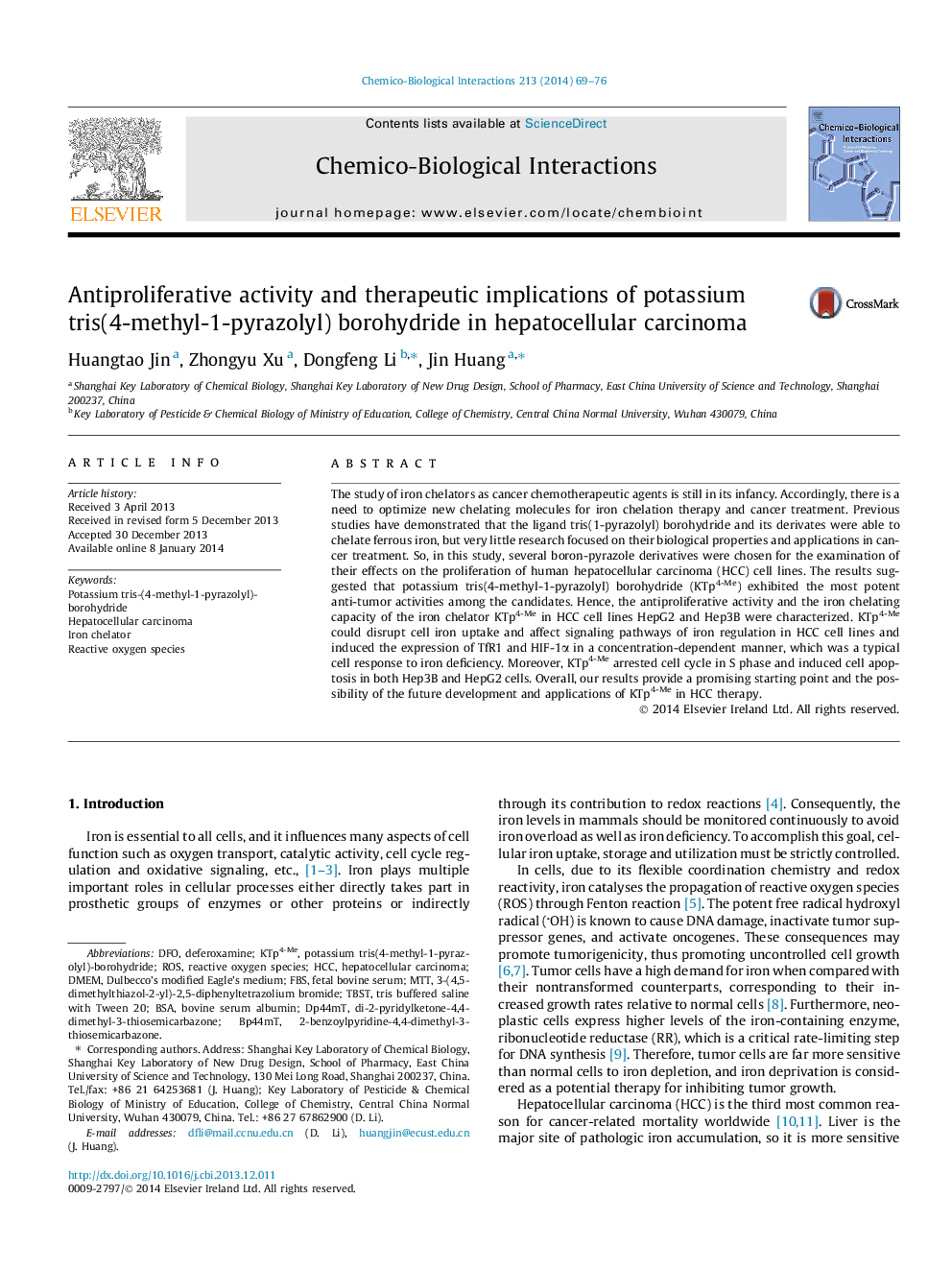| کد مقاله | کد نشریه | سال انتشار | مقاله انگلیسی | نسخه تمام متن |
|---|---|---|---|---|
| 2580527 | 1561628 | 2014 | 8 صفحه PDF | دانلود رایگان |
• KTp4-Me could inhibit the growth of human HCC cells in vitro.
• KTp4-Me could arrest HCC cell lines in S phase and induce cell apoptosis.
• The iron uptake and signaling pathways could be affected by KTp4-Me.
• KTp4-Me provides a promising starting point for the treatment of human HCC.
The study of iron chelators as cancer chemotherapeutic agents is still in its infancy. Accordingly, there is a need to optimize new chelating molecules for iron chelation therapy and cancer treatment. Previous studies have demonstrated that the ligand tris(1-pyrazolyl) borohydride and its derivates were able to chelate ferrous iron, but very little research focused on their biological properties and applications in cancer treatment. So, in this study, several boron-pyrazole derivatives were chosen for the examination of their effects on the proliferation of human hepatocellular carcinoma (HCC) cell lines. The results suggested that potassium tris(4-methyl-1-pyrazolyl) borohydride (KTp4-Me) exhibited the most potent anti-tumor activities among the candidates. Hence, the antiproliferative activity and the iron chelating capacity of the iron chelator KTp4-Me in HCC cell lines HepG2 and Hep3B were characterized. KTp4-Me could disrupt cell iron uptake and affect signaling pathways of iron regulation in HCC cell lines and induced the expression of TfR1 and HIF-1α in a concentration-dependent manner, which was a typical cell response to iron deficiency. Moreover, KTp4-Me arrested cell cycle in S phase and induced cell apoptosis in both Hep3B and HepG2 cells. Overall, our results provide a promising starting point and the possibility of the future development and applications of KTp4-Me in HCC therapy.
Figure optionsDownload as PowerPoint slide
Journal: Chemico-Biological Interactions - Volume 213, 25 April 2014, Pages 69–76
